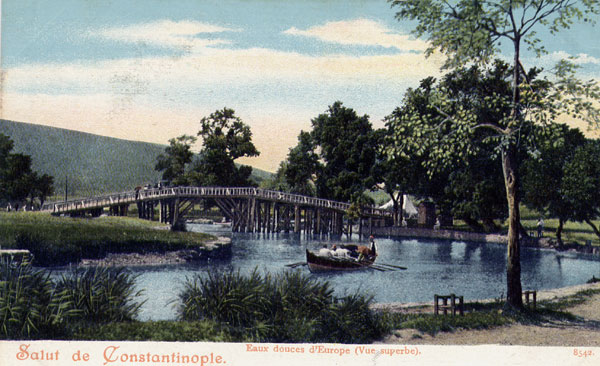 |
A postcard
view of the once verdant pleasure and picnic spot at Kağıthane
stream, in the head waters of the Golden Horn. The area has long since lost
all its charm and today is little better than a stagnant brook. There was
a similar popular spot on the Asiatic shore as well.
 |
A postcard
view of another former recreation spot, long since lost to concrete. La
prairie de Beycos was one of the spots where the British community
used to hold cricket matches.
 |
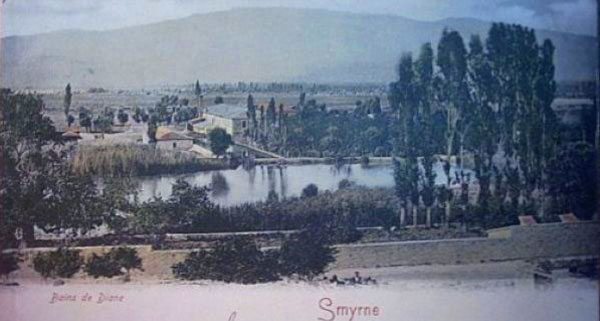 |
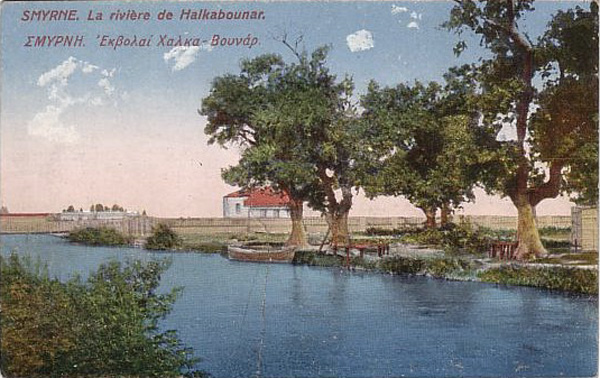 |
Somewhat to the north east of Punta, and quite close, Diana’s baths [Halkapınar]
were a recreation spot of Smyrna stretching back to antiquity. Today the
area is crowded out like most of the surrounding land of Izmir and effluent
discharge has resulted in a permanent stink to the area. The then sparsely
populated lands that were Turkey in the past must have been one of the attractions
to convince many Westerners to make that permanent move.
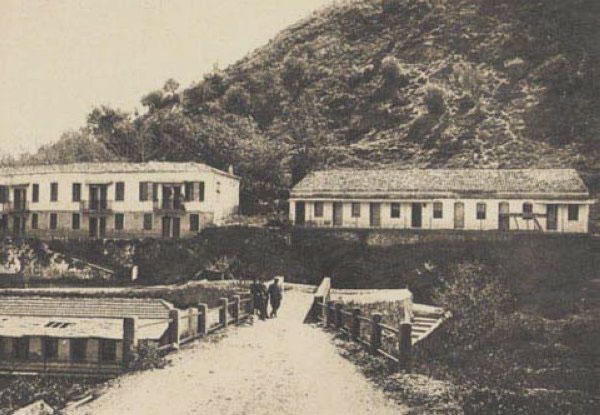 |
Agamemnon’s baths, used since ancient times, situated ~8 km from the city centre of Smyrna, viewed around 1900, today the district is known as Balçova, and the hot waters are
now used by high-class hotels.
 |
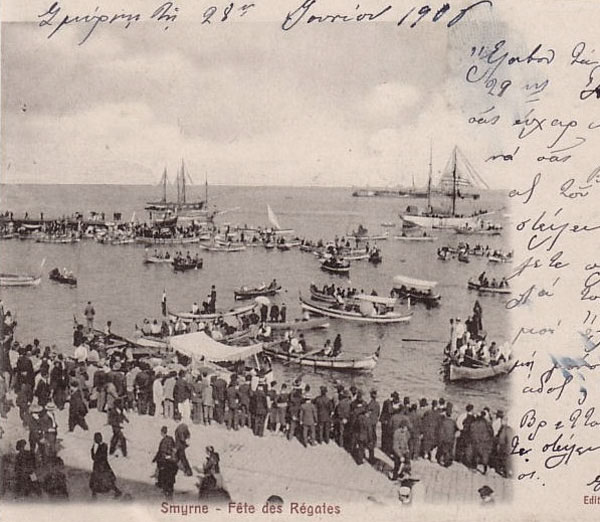 |
Further info from the book of Leon Kontente “Smyrne et l’Occident”:
This festivity started in 1893 and was repeated each year from then onwards. The race started at the Sporting Club and the regates had to row until the baths at Punta and return. There were three races the first one of which was amongst the Europeans, the second one amongst the ‘locals’ and the third ‘barques de pecheurs’ [boats of the fishermen]. The first European race was won by the Guiffray owned Rose, the locals’ race by the one owned by Pestemalcioglu and the third, that of the fishermen was won by Laz Ibrahim. There were 10,000 spectators to these races. This festivity became quite important in the 1900’s. These races were joined by 4,000 sailors and the Quais as well as the balconies of the Sporting Club were full of spectactors. This festivity was followed with interest by the Turks, Jews, Armenians, but particularly by the Greeks and Levantines. There were two orchestras ‘l’Idadiye Bandosu’ [the municipial band] and the Orchestra of the Greek Orphanage.
This festivity started in 1893 and was repeated each year from then onwards. The race started at the Sporting Club and the regates had to row until the baths at Punta and return. There were three races the first one of which was amongst the Europeans, the second one amongst the ‘locals’ and the third ‘barques de pecheurs’ [boats of the fishermen]. The first European race was won by the Guiffray owned Rose, the locals’ race by the one owned by Pestemalcioglu and the third, that of the fishermen was won by Laz Ibrahim. There were 10,000 spectators to these races. This festivity became quite important in the 1900’s. These races were joined by 4,000 sailors and the Quais as well as the balconies of the Sporting Club were full of spectactors. This festivity was followed with interest by the Turks, Jews, Armenians, but particularly by the Greeks and Levantines. There were two orchestras ‘l’Idadiye Bandosu’ [the municipial band] and the Orchestra of the Greek Orphanage.
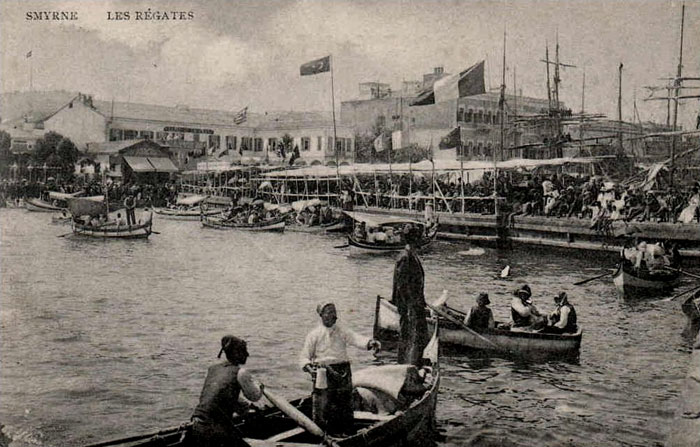 |
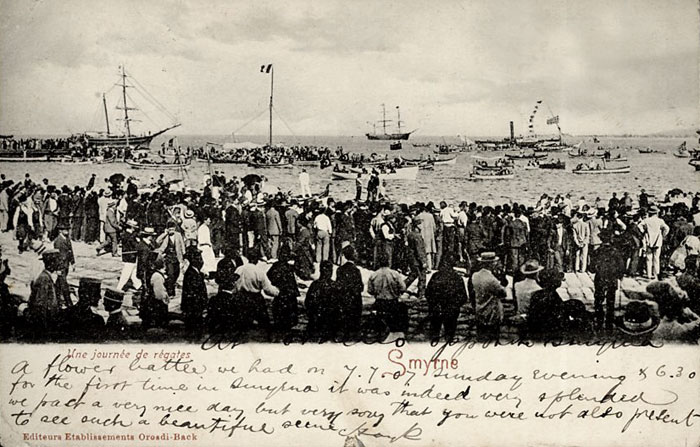 |
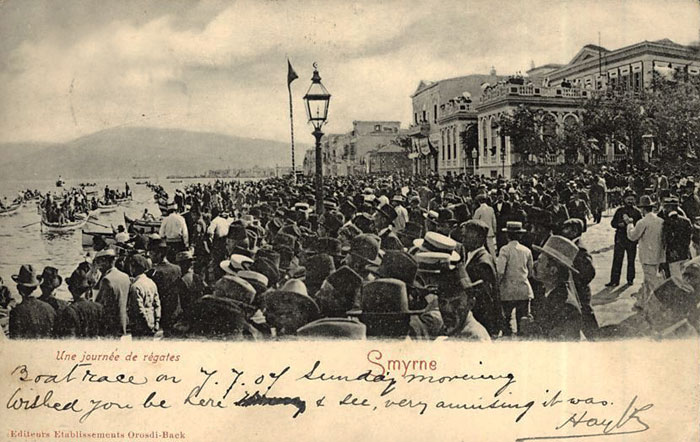 |
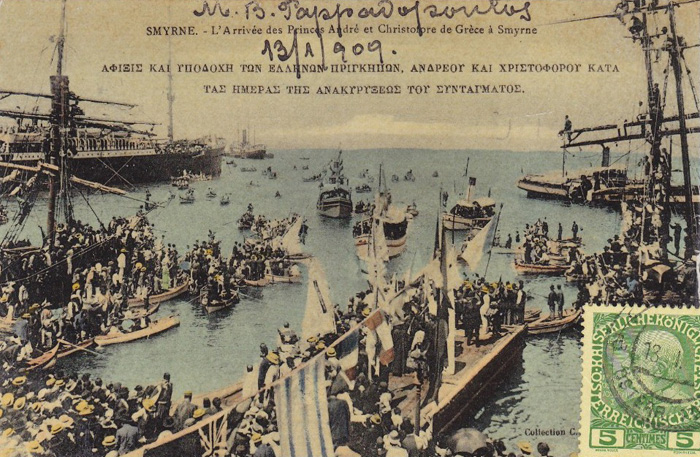 |